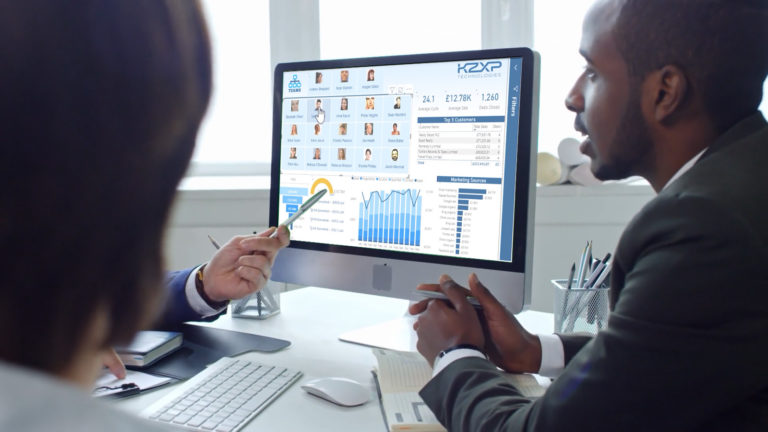Unleashing Insights – Your Step-by-Step Guide to Downloading a PBIX File from Power BI Service
Power BI has become an indispensable tool for organizations and individuals seeking to analyze and visualize data effectively. With its intuitive interface and robust features, Power BI empowers users to gain valuable insights from their data. One of the key functionalities offered by Power BI is the ability to create and share interactive reports and dashboards. While viewing these reports and dashboards directly in Power BI Service is convenient, there are scenarios where downloading a PBIX file becomes necessary. In this article, we will explore what PBIX files are, the benefits of downloading them from Power BI Service, and provide you with a step-by-step guide to accomplish this task.
What is Power BI?
Before we dive into the details of downloading PBIX files, let’s briefly understand what Power BI is. Power BI is a business analytics service provided by Microsoft that allows users to connect to various data sources, create interactive visualizations, and share insights across organizations. It offers a range of tools, including Power BI Desktop for authoring reports, Power BI Service for publishing and sharing reports, and Power BI Mobile for accessing reports on the go.
Understanding PBIX Files
Definition and Purpose
A PBIX file is the native file format used by Power BI Desktop to save reports, including their data, queries, visualizations, and settings. It encapsulates all the elements necessary to recreate the report in its entirety. When you download a PBIX file from Power BI Service, you are essentially obtaining a copy of the report that can be opened and modified using Power BI Desktop.
Components of a PBIX File
A typical PBIX file consists of the following components:
Data Model: This component contains the data imported or connected to the report, along with any transformations or calculations applied to the data.
Queries: Queries define how the data is extracted, transformed, and loaded into the report. They include source connections, data shaping steps, and data cleansing operations.
Visualizations: Visualizations represent the graphical elements of the report, such as charts, tables, and maps. They are created based on the underlying data and allow users to interact and explore the data visually.
Report Settings: This component includes various settings related to the report, such as filters, slicers, themes, and page layouts. It also encompasses the formatting options applied to the visualizations.
Benefits of Downloading a PBIX File from Power BI Service
Downloading a PBIX file from Power BI Service offers several advantages, enabling you to leverage the full potential of your reports. Let’s explore some of the key benefits:
Offline Access and Sharing
By downloading a PBIX file, you can access your reports even when you’re offline or don’t have access to the Power BI Service. This flexibility allows you to view and present your reports anywhere, anytime, without being dependent on an internet connection. Additionally, you can share the downloaded PBIX file with others, enabling them to open and explore the report using Power BI Desktop.
Customization and Modification
Downloading a PBIX file grants you the ability to customize and modify the report according to your specific requirements. Whether it’s adjusting visualizations, adding new data sources, or implementing complex calculations, Power BI Desktop provides a rich set of tools and features to fine-tune the report. This level of customization empowers you to tailor the report to your exact needs and create a personalized data analysis experience.
Backup and Version Control
Having a local copy of your PBIX file acts as a backup mechanism, safeguarding your work in case of unexpected data loss or system failures. By regularly downloading your reports, you ensure that your hard work is protected and can be easily restored if necessary. Moreover, downloading a PBIX file enables you to maintain version control. You can create different versions of your report, experiment with changes, and revert back to previous versions if needed, providing a safety net for your analytical journey.
Step-by-Step Guide to Downloading a PBIX File from Power BI Service
Now that we understand the benefits of downloading PBIX files, let’s walk through the step-by-step process to accomplish this task:
1. Accessing the Power BI Service
To begin, open your preferred web browser and navigate to the Power BI Service. You can access the Power BI Service by entering the URL provided by Microsoft or by searching for “Power BI Service” in a search engine.
2. Opening the Desired Report or Dashboard
Once you’re logged into the Power BI Service, locate the report or dashboard you want to download as a PBIX file. Navigate to the desired workspace, and if necessary, browse the appropriate workspace folder or workspace app to find the specific report or dashboard.
3. Navigating to the Download Option
Within the report or dashboard view, locate the “File” menu at the top-left corner of the screen. Click on the “File” menu to expand the options.
4. Selecting the PBIX Format
From the expanded “File” menu, choose the “Download” option. A submenu will appear, offering various file formats for download. Select the “Power BI Desktop (.pbix)” option to download the report in the PBIX format.
5. Choosing a Download Location
After selecting the PBIX format, a prompt will appear asking you to choose a download location on your computer. Browse to the desired folder or directory where you want to save the PBIX file, and click “Save” or “Download” to initiate the download.
6. Initiating the Download
Once you’ve chosen the download location, Power BI Service will begin preparing the PBIX file for download. The time taken for the download to complete depends on the size and complexity of the report. Once the preparation is finished, the PBIX file will be downloaded to your specified location.
Troubleshooting Common Issues
While downloading a PBIX file from Power BI Service is usually straightforward, you may encounter some common issues during the process. Here are a few troubleshooting tips to help you overcome these challenges:
Insufficient Permissions
If you’re unable to download a PBIX file, ensure that you have the necessary permissions to access and download reports in Power BI Service. Contact your organization’s Power BI administrator or the report owner to verify and adjust your permissions if needed.
File Size Limitations
Power BI imposes limitations on the size of the PBIX files that can be downloaded. If your report exceeds the size limit, consider optimizing the report by removing unnecessary data, reducing the number of visuals, or compressing large files before attempting the download.
Unsupported Features
Certain features or visualizations used in your report may not be supported in Power BI Desktop, especially if you’re using advanced or preview features. Before downloading the PBIX file, review the Power BI Desktop documentation or consult the Power BI community to ensure that all the features you’ve used are compatible with the desktop version.
Best Practices for Working with PBIX Files
To make the most out of your PBIX files, it’s essential to follow best practices. Consider implementing the following guidelines:
Organizing Files and Folders
Maintain a well-structured folder hierarchy to store your PBIX files. Create separate folders for different projects, departments, or clients, making it easy to locate and manage the files in the future.
Naming Conventions
Adopt a consistent naming convention for your PBIX files. Include relevant information such as the report name, date, version, and any other identifiers that can help you identify and differentiate between multiple versions or variants of the same report.
Documentation and Metadata
Document the key aspects of your PBIX files, such as the data sources used, transformations applied, and any specific requirements or considerations. Additionally, leverage the metadata capabilities within Power BI Desktop to provide contextual information and descriptions for the report elements, facilitating collaboration and knowledge sharing.
Conclusion
Downloading a PBIX file from Power BI Service opens up a world of possibilities for offline access, customization, backup, and version control. By following the step-by-step guide outlined in this article, you can effortlessly download PBIX files and unlock the full potential of your reports using Power BI Desktop. Remember to troubleshoot any issues that may arise and embrace best practices to maximize your productivity and efficiency when working with PBIX files.
FAQs
Can I edit a downloaded PBIX file?
Yes, downloading a PBIX file allows you to open and modify it using Power BI Desktop, giving you full control over the report’s content and visualizations.
Can I share a downloaded PBIX file with others?
Yes, you can share the downloaded PBIX file with others by sending it to them or providing them access to the file through a shared drive or collaboration platform.
Are there any limitations when working offline with PBIX files?
While working offline with PBIX files, certain features that require an internet connection, such as real-time data refresh or access to cloud-based services, may not be available.
How can I ensure compatibility between different versions of Power BI Desktop?
It’s recommended to keep Power BI Desktop updated to the latest version to ensure compatibility. Additionally, before sharing a PBIX file, communicate the version used to create it to avoid compatibility issues.
Is it possible to convert a PBIX file to other formats?
Power BI Desktop supports exporting PBIX files to other formats, such as PDF or PowerPoint, making it convenient to share reports with stakeholders who don’t have Power BI Desktop installed.














